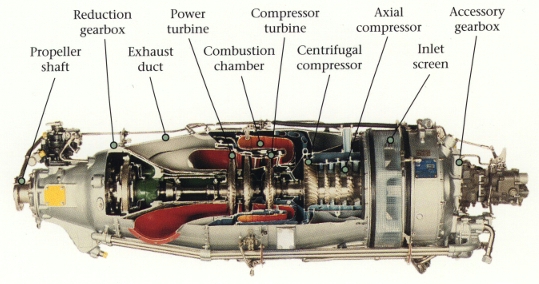What is this turbine part?
This assembly is part of the turbine used to rotate the compressor section of a Pratt & Whitney PT6, a free turbine turboprop. It's known as compressor turbine or just CT.
Where is it located?
The compressor turbine is located at the exit nozzle of the annular combustion chamber, and is the first component which enters in rotation under the effect of the hot gas velocity.

Compressor turbine. Source: P&W Training Manual
Actual engine:

Source: Youtube
As visible, there is a second turbine (made of one or more stages, depending on the PT6 model) further downstream. They appear to be on the same shaft, but they aren't. There are two independent shafts rotating at their own angular speed.
The compressor turbine extracts power to rotate mostly the engine compressor, which role is to feed the combustion chamber with compressed air. The other turbine extracts power used (mostly) for the aircraft propulsion.
Turbine blades material

Source
The blades, the hottest parts after the combustion chamber, are made of a nickel alloys. Nickel itself melts at 1,455 °C, and alloys are made more resistant either by solidified directional casting or single crystal growth (see more on materials). In larger engines turbine blades are often maintained below their melting point by circulating air in small internal channels. This is not the case for the PT6, gas temperature is still below the melting point (about 900°C).
Blades are protected by an anti-corrosion coating to delay as much as possible the inclusion of ion-sulfur into a material, a reaction known as sulphidation. Nickel sulphidation forms $\small Ni_3 S_2$ which melts at 635 °C. Sulphidation occurs all the time, but more quickly when flying close to sea water or industrial areas rich in sodium salts which can form sodium sulfate (more here). Frequent water washes of the turbine maybe necessary to eliminate salts.
Looking online for PT6 sulphidation, we can see a large number of investigation reports dealing with engine failures due to maintenance not done according to procedures.
About the P&W PT6 engine
The PT6 is a well known engine, available in various versions, which has been used for 50 years on aircraft and helicopters (but also on IndyCars, hovercraft, "turbotrain", snowplows....).

(source)
The particularity is the free turbine design. On large turbo-engines, the compressor (the low pressure compressor on engines with two or three spools) is on the same shaft than the engine output (which drives the fan, the rotor, the speed reduction gear,etc).
On a free turbine there are two rotating groups that are not linked by a shaft.

(source)
The first group is the gas generator section -- in blue, on the right hand of the images -- with a compressor and a combustion chamber. High pressure gas are sent to the last stage of the gas generator, which is a turbine stage -- the compressor turbine or CT, the one you've got. The CT drives the whole gas generator section and the accessory gearbox.
The energy used to move the generator section is only a part of the available energy in the hot gas (e.g. 66% on a twin PT6T-3D). The rest makes it's way to the mechanically-independent power section composed of one or more turbines, depending on the engine model. The turbines drive either the propeller, the rotor, or anything attached to the power section shaft, directly or via a reduction gearbox.
The gas production section can be spun (albeit at idle) wit the power section at rest (an helicopter turbine can be spun, while the rotor is maintained stationary).






